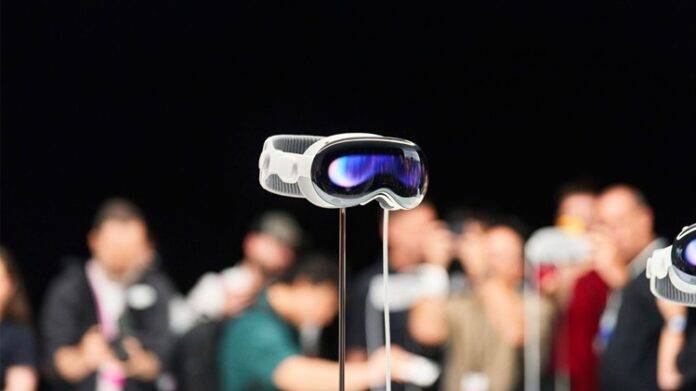After months of positive showings, Apple’s Vision Pro augmented-reality headset is finally in the hands and on the heads of users. This system has proven consistent with Apple’s philosophy of waiting to release ultra-high-quality products at a premium price, even if the range of specialized apps is currently limited. Still, despite a slow start, the platform holds immense promise in the future of computing, with the potential to replace some key traditional pieces of home and work tech.
What is the Vision Pro?
The Apple Vision Pro is a headset display system with built-in processors and high-quality spatial tracking. As an AR device, it can overlay digital 2D and 3D elements into the real world using special cameras and screen technology. Essentially it looks like a pair of goggles, powered by a mobile battery pack and controlled either by hand signals or paired peripherals. If any of this is difficult to imagine, consider the official Vision Pro launch video:
<iframe width=”560″ height=”315″ src=”https://www.youtube.com/embed/IY4x85zqoJM?si=moNo82aTV0xNTMiI” title=”YouTube video player” frameborder=”0″ allow=”accelerometer; autoplay; clipboard-write; encrypted-media; gyroscope; picture-in-picture; web-share” allowfullscreen></iframe>
What Could the Vision Pro Replace?
The basic use of the Vision Pro could be as a mobile computing system that mitigates the need for a physical monitor display. Instead, the Vision Pro can virtually insert multiple displays into your field of view, mimicking several active screens and apps you can flick between in real time.
A Vision Pro could then replace a work monitor, a home television, or a tablet. The mobility of the platform would also allow you to carry the device with you. This could make it just as easy to work or entertain yourself from the backyard as you could in a living room or office, or on a train or flight. Some uses would still require an active internet connection, but other elements could also be performed offline as they could on a laptop or tablet. Though the display would be unique, the activity itself could remain much the same.
Consider what goes into a typical entertainment experience on a traditional mobile or desktop device. Connecting to a casino rewards comparison website to collect free spins offers could be different if hand controls were used, otherwise, the experience would remain traditional. Players would still collect free spins and deposit matches on services like Luxury Casino or Casino Classic. They’d also still play the same games, though again titles like slots and blackjack could be motion-controlled. In these forms of access, it would be the convenience of the headset display that would set access apart. The same would be true for watching movies, writing emails, or navigating database documents.
The Pros and Cons
Access and mobility are the big advantages offered by the Vision Pro that established monitor and TV setups can’t match. Being able to enjoy a virtual five-monitor setup without having to physically place, link, or buy individual monitors could prove hugely helpful in certain work applications. Being able to watch a virtual 120-inch TV in a small room without the physical space is also an appreciable and convenient step forward. The expanding folding phone market has helped illustrate how important larger screens are, and there’s no limit on virtual sizes in AR.
A dedicated AR headset also offers a major advantage in privacy. Whether you’re working on something confidential or writing a personal email, nobody likes the feeling of somebody looking over their shoulder. With an AR headset, nobody else sees what you see, so any form of direct spying is impossible.
On the con side, there is still a matter of cost. The Vision Pro costs between $3,500 and $3,900 at launch depending on the model, a lot to ask for new technology. Of course, cheaper alternatives from other brands could reduce this issue, but for dedicated Apple fans, that’s a non-starter.
Control is also an issue with the Vision Pro, as while motion control can allow you to do everything, this is nowhere near as efficient as a standard keyboard and mouse setup. Factor on top of this the potential for eyestrain, and the need to connect to other computers for more hardware-intensive tasks, and the Vision Pro is slightly less flexible than it first appears.

Source: Pixabay
For the right user, the Vision Pro could be the perfect device to fit their needs. As an early-generation device, however, it’s unlikely to deliver a perfect and flawless experience. That said, like the 2007 iPhone before it, we wouldn’t be surprised to see Apple create and dominate a new market with the future potential that the Vision Pro represents.




















